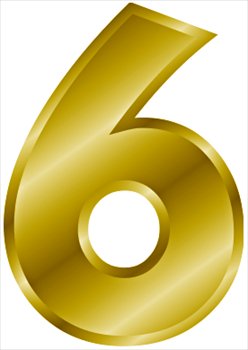
Investing can be remarkably simple. This article shows you how to construct a well-diversified portfolio of stocks and bonds without breaking a sweat. The secret is to employ low-cost, index-tracking exchange-traded funds.
If you're not an investment hobbyist and don't employ an adviser, you have no reason not use ETFs to build your portfolio. It's not the only good strategy.
But the numbers don't lie: Over time, roughly two-thirds of actively managed funds fail to match their benchmarks. The average actively managed fund trails its index by the amount it charges for expenses. That makes sense. For every winner in the stock market, there has to be a loser. So, on average, funds should match their indexes--minus their fees.
Below are my favorite index ETFs. Six of them are sponsored by Vanguard, the industry's longtime low-cost leader. For five of the categories I've provided alternatives from other ETF sponsors. (Check with your brokerage to see if it lets you trade a particular family's ETFs without commissions; that could tip the scales in favor of a particular ETF.) If you're uncomfortable with ETFs, consider the Admiral shares of Vanguard's traditional funds, which are identical to their ETFs in holdings and fees. The minimum investment for the Admiral shares is
I've made a few tweaks since the last time I wrote on this subject. If you've invested in ETFs the way I recommended before, you don't have to change your strategy now.
Put 40% of your assets in Vanguard S&P 500 ETF (symbol VOO) or iShares Core S&P 500 Index ETF (IVV), both of which track Standard & Poor's 500-stock index. Their expense ratios are just 0.05% and 0.07%, respectively. The index includes virtually all large-capitalization U.S. stocks and some mid-cap stocks, representing roughly 70% of the total capitalization of the U.S. stock market. Like all the stock indexes in this article, the S&P 500 is weighted by market cap, meaning a stock's weight is figured by multiplying the number of shares outstanding by its share price. Thus, Apple (AAPL) is the largest holding of both ETFs, with nearly 4% of assets.
Active managers have had a tough time beating the S&P of late. Over the past five years, only 15% of large-blend funds (those whose managers focus on stocks with a blend of value and growth attributes) have beaten the index. Don't expect that pattern to continue, especially during a bear market. But by using an index ETF, you can count on beating the average large-company blend fund. Over the past 15 years, which included two devastating bear markets, about 60% of large-company-blend mutual funds and ETFs trailed the S&P 500. (All returns in this article are through
Vanguard FTSE Developed Market ETF (VEA) and Schwab International Equity ETF (SCHF) cover developed foreign stock markets and charge just 0.09% and 0.08% in annual expenses, respectively. One of them deserves 15% of your assets. Over the past five years, these ETFs returned an annualized 4.1% and 3.4%, respectively. Foreign stocks have been laggards in recent years, but foreign stocks and U.S. stocks frequently trade places at the head of the pack. What's more, foreign stocks are cheaper than U.S. stocks on measures such as price-earnings ratios.
Put 10% of your assets in Vanguard FTSE Emerging Markets ETF (VWO) or iShares Core MSCI Emerging Markets Index (IEMG). These ETFs provide investments in volatile but fast-growing emerging markets, such as
Invest 5% of your assets in Vanguard S&P Small-Cap 600 ETF (VIOO) or iShares Core S&P Small-Cap ETF (IJR), which charge 0.15% and 0.12% per year, respectively. Small caps are riskier than both large caps and mid caps, but over the long term they have delivered higher returns. Like all S&P benchmarks, the Small Cap 600 index, which both funds track, is, to a minor extent, actively managed because S&P requires that companies pass certain profitability screens before including them in the indexes. That makes little difference among large caps and mid caps, but the additional S&P scrutiny is prudent in small caps, which include some dodgy companies. Over the past five years, the S&P index returned an annualized 13.7%--an average of 2.3 percentage points per year better than the Russell 2000 index, which also focuses on small-company stocks. The weighted average market cap of the S&P index is
The case for indexing bonds is not as compelling as the argument for indexing stocks. Although the most popular stocks dominate stock indexes, the biggest issuers of debt dominate bond indexes. Vanguard Intermediate-Term Corporate Bond (VCIT) follows an index that weights investment-grade corporate bonds according to the value of each issue's outstanding debt. The ETF charges 0.12% annually and yields 3.5%. It deserves 25% of your assets. Because bond prices move in the opposite direction of interest rates, this fund will be hurt if rates rise. Figure on it losing 6.5% of its value if rates rise by one percentage point.
Remember to rebalance your portfolio whenever the allocations to the funds stray significantly from where you started. When you're about 15 years from retirement, trim each of the stock ETFs enough to add five percentage points to your allocation to the bond fund ETF. Repeat that maneuver every five years until you have about 40% of your assets in bonds, which is a good allocation for the early years of retirement.
Steven T. Goldberg is an investment adviser in the Washington, D.C. area and a contributing columnist for Kiplinger.



 Contact The Editor
Contact The Editor
 Articles By This Author
Articles By This Author